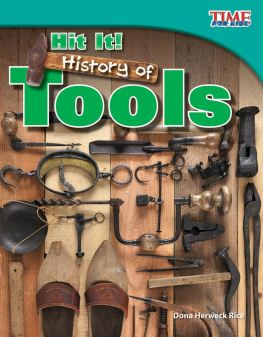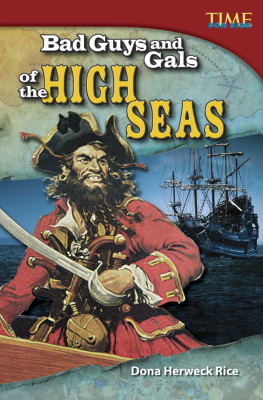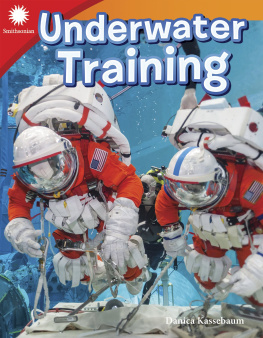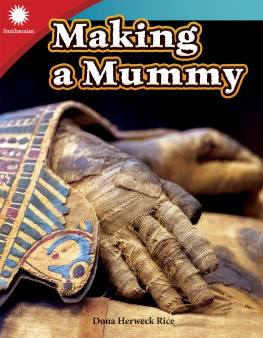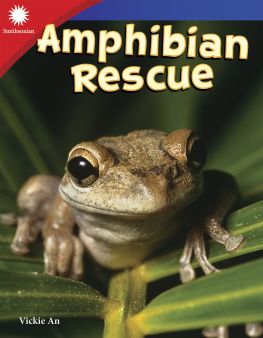Dona Herweck Rice - Navigating at Sea
Here you can read online Dona Herweck Rice - Navigating at Sea full text of the book (entire story) in english for free. Download pdf and epub, get meaning, cover and reviews about this ebook. year: 2018, publisher: Teacher Created Materials, genre: History. Description of the work, (preface) as well as reviews are available. Best literature library LitArk.com created for fans of good reading and offers a wide selection of genres:
Romance novel
Science fiction
Adventure
Detective
Science
History
Home and family
Prose
Art
Politics
Computer
Non-fiction
Religion
Business
Children
Humor
Choose a favorite category and find really read worthwhile books. Enjoy immersion in the world of imagination, feel the emotions of the characters or learn something new for yourself, make an fascinating discovery.
- Book:Navigating at Sea
- Author:
- Publisher:Teacher Created Materials
- Genre:
- Year:2018
- Rating:4 / 5
- Favourites:Add to favourites
- Your mark:
- 80
- 1
- 2
- 3
- 4
- 5
Navigating at Sea: summary, description and annotation
We offer to read an annotation, description, summary or preface (depends on what the author of the book "Navigating at Sea" wrote himself). If you haven't found the necessary information about the book — write in the comments, we will try to find it.
Navigating at Sea — read online for free the complete book (whole text) full work
Below is the text of the book, divided by pages. System saving the place of the last page read, allows you to conveniently read the book "Navigating at Sea" online for free, without having to search again every time where you left off. Put a bookmark, and you can go to the page where you finished reading at any time.
Font size:
Interval:
Bookmark:
0covercover.xhtmlcover1page0001page0001.xhtml22page0002page0002.xhtmlNavigating at Sea33page0003page0003.xhtml44page0004page0004.xhtmlTable of Contents Second Star to the Right 4 By Land, By Sea 6 Early Navigation 10 Navigation Now 20 Straight on till Morning 26 STEAM Challenge 28 Glossary 30 Index 31 Career Advice 3255page0005page0005.xhtmlSecond Star to the Right Peter Pan follows the stars to Neverland. "Second star to the right and straight on till morning! " he cries as he navigates the sky. He leads his group toward a grand adventure. The stars tell him just where to find it. Neverland is not real, of course. But following the stars is. It was one of the first ways people learned to navigate. They followed the stars both on sea and on land. They used stars to position themselves. Then, they could figure out where they needed to go. Instruments have changed over time. Better and better technology is used. It is more precise than it has ever been. But the roots of navigation remain. In many ways, we still follow the stars. early navigation instruments66page0006page0006.xhtmlA sailor uses the stars to find his position at sea.77page0007page0007.xhtmlBy Land, By Sea Since they first walked, people have been on the move. They travel to explore new areas. This has always been easiest by land. People can walk across land and rest when they need to. They can find food and water along the way. They can use landmarks as guideposts. Traveling by sea is riskier than traveling by land. The sea is always changing. There are few landmarks that stay in one place on the water. It is not as easy to find resources out in the sea. The sea itself is full of dangers. People cannot just swim through the water and rest when needed. This 1773 engraving shows villagers from Tahiti traveling by boat.88page0008page0008.xhtmlThis detailed map of Italy was drawn in 1570. ArtS Mapping the Way A common navigation tool is a map. For most of history, maps were drawn by hand. They were a true art form. Modern maps are usually made by computers. In this way, they are now more science than art.99page0009page0009.xhtmlLatitude and Longitude To pinpoint their location, people made an invisible grid around Earth. This grid is made of two sets of lines. Lines of latitude circle Earth from east to west. These lines are parallel. They never cross each other. The center line is the equator. Lines of longitude run north and south. These lines are not parallel. They meet at the poles. These lines are also called meridians. The center line is the prime meridian. Both sets of lines are measured in degrees. With degree coordinates, any spot on Earth can be found. Early navigators could use this grid to help them if they could figure it out at sea. They began to make tools to help them find what they needed to know. Navigation is from the Latin word navis, which means "ship. " To navigate is to steer a ship.1010page0010page0010.xhtmlLines of longitude run north and south. equatorline prime LONGITUDE Lines of latitude run east and west. equator prime LATITUDE1111page0011page0011.xhtmlEarly Navigation It is human nature to want to explore. People want to know what is beyond what they see. By 1700, people from Europe had explored about half of Earth's surface. But there was so much more to know! It was hard enough to explore the land. The seas posed even more challenges. Even so, the risks seemed worth it. People were sure that opportunities waited for them. Wealth and power could be gained in and across the waters. One problem was how to plot a sea route. Open water was filled with danger. People had to get where they were going quickly. Sailing without a clear route was too risky. People needed tools they could trust. A quadrant can be used to measure angles. navigational dividers1212page0012page0012.xhtmlThis sailor uses tools to navigate. In open water, sailors used dead reckoning to figure out their location in the water. It is based on the last location, direction, and speed traveled.1313page0013page0013.xhtmlViking Sunstones Vikings sailed the seas long ago. They visited many lands and traded for what they needed. They raided some places, too. Vikings were known for their fierceness and skills at sea. Vikings developed tools and methods to help them navigate. They were experts at using the sun to find direction. This was hard to do where they lived. The skies were often overcast and foggy. They found a solution with sunstones. Sunstones are crystals that polarize, or control, light. They helped Vikings find the sun when there were clouds in the sky. At least they had some idea of their direction. But "some idea" was not good enough. They needed a more precise way to know where they were headed. They soon found it. a Viking at sea1414page0014page0014.xhtmlScience The direction of light polarization in the sunstone matches the polarization of the sunlight. The atmosphere polarizes light in a circular pattern. The sun is hidden behind clouds. 1 The navigator points a sunstone at a patch of sky and twists it until it appears brightest. The crystal now points toward the sun. 2 The navigator repeats the process from another position. The intersection of the two readings show the sun's location.1515page0015page0015.xhtmlLodestones Compasses have been around a long time. They are used to find direction. But before them, there were lodestones. Lodestones are pieces of magnetic ore. They are found in nature. Vikings used lodestones to make magnets. They rubbed needles on lodestones. This magnetized the needles. In other words, the needles became magnets. Magnets have a force that attracts and repels. Magnet ends attract or repel other magnets. Earth has a magnetic field. A magnet can align to, or line up with, Earth's magnetic field. Vikings placed a charged needle in a bowl of water. It floated. It slowly pointed north and south. It aligned with Earth's magnetic field. They could then "read" the needle. magnetic stone1616page0016page0016.xhtmlEarth and its magnetic field Magnetic force is strongest at a magnet's north and south poles. This is true of Earth, too!1717page0017page0017.xhtmlSextants In the late 1600s, King Charles of England gave scientists a task. He asked them to use objects in the sky to find where they were. They made a tool called a sextant. A sextant measures the angle between two objects. The user looks at the horizon through an eyepiece and a half mirror. One more mirror is placed on a moving arm. It is moved until the reflection of the sun (or star) seems to meet the horizon. Then, the angle between the two objects is measured. A sextant's scale is used for this. The angle can be used to find the user's location and distance. In time, better sextants were made. They became more precise. Scientists could find a location within one degree of latitude. They could find distance almost exactly. Some sextants have different lenses that make the horizon more visible. sextant1818page0018page0018.xhtmlThis sailor uses a sextant. Mathematics Measuring Degrees One degree of latitude is 111 kilometers (69 miles). To use a sextant, angles are compared to tables with degrees of latitude. Without the tables, location would remain a mystery.1919page0019page0019.xhtmlLongitude and a Good Clock By about 1700, people could easily find latitude at sea. They had tools to rely on. But longitude was not the same. They needed seaworthy clocks. This is why : Earth rotates 15 degrees of longitude each hour. People at sea could only find longitude by comparing ship time to the time on clocks they brought from land. Ship time was found with the sun. But land clocks did not keep time well on ships. These clocks had pendulums. The ships and clocks bobbed about on the sea. This affected the clocks. But it was just a matter of time before a good sea clock was invented! Countries began to offer big prizes for a great clock. Many people tried. Soon, the marine chronometer (kruh-NAW-muh-tuhr) was made. It kept accurate time at sea. Now, both longitude and latitude could be found. Clocks like this do not keep time well at sea. marine chronometer2020page0020page0020.xhtmlClocks continue to improve. The device above is a clock that is so accurate that it would take 20 million years for it to be just one second slow!2121page0021page0021.xhtmlNavigation Now As the 1800s came to an end, navigation tools were better than they had ever been. Maps were reliable. Tools could be relied on. Math knowledge had advanced, too. People could make more precise calculations. This meant they could find more precise locations. They could sail the seas with confidence. They knew where they were and where they were going. But something big was about to happen. Air travel and space travel began. An even greater need for precise navigation came with them. New tools were made to meet the demand. They helped people fly through the air. They helped with sea travel, too. space shuttle early airplane2222page0022page0022.xhtmlThis gimbal makes sure the disc in the center does not move when the ship does. Technology Gimbal Scientists needed to find a way to keep instruments steady on moving ships. They turned to gimbals. A gimbal is a set of rings in which an object can be mounted. Each ring pivots on its own. The object is mounted to the center ring by a center axis. Each outer ring is mounted to another by two axis points. The gimbals pivot, but the object stays steady.2323page0023page0023.xhtmlRadio One of the biggest changes in navigation was communication. Radio was a vital new tool. Information could be sent to ships from land or between ships. Ships could ask for help, too. In the past, a big threat to ships was being alone at sea. There was no way to get help if something happened. Being able to reach out beyond the ships made it safer for all. The U.S. Navy began to send time signals to its ships by radio. This time communication was more exact than before. Warnings were also shared with ships. Perhaps a storm was on its way. Maybe danger was near. With radio, news could be shared no matter where a ship was. Ships were not alone. And navigating was not as hard. radio tower on a ship2424page0024page0024.xhtmlGuglielmo Marconi (left), inventer of the radio, uses one of his early machines. Radio waves can travel through walls, people, and other objects!2525page0025page0025.xhtmlGPS When people think of navigating today, they think of GPS. It stands for Global Positioning System. It has changed how people find their way. GPS uses 24 satellites that orbit Earth. Each one orbits Earth twice a day. There are at least four satellites in range at all times over any point on Earth. Each one sends and receives signals. A GPS receiver reads those signals. The device can read a location almost anywhere in the world. Many people have a GPS device in their smartphones. They have GPS in their cars. It is often used for directions. Ships now have GPS. They can always find their way. They can always be found, too! GPS satellites circle Earth on different paths.2626page0026page0026.xhtmlSails use wind to push a boat forward. Engineering Go, Boat, Go! Like GPS, different instruments have been made to tell sailors where they are and where to go. But sailors still need to be able to make their boats move. Engineers design boats using basic tools. Some boats have sails, so wind can push them. Some have motors or engines. Some even have paddle wheels.2727page0027page0027.xhtmlStraight on till Morning Where there is a will, there is a way. People want to explore the waters of the world, as they have for thousands of years. In that time, people have found better and more precise ways to travel the seas. They have gone from sailing along the shore to crossing open water. They have tracked their paths by the stars and the sun. Today, they use GPS. People will continue to explore into the future. What will the future hold? Things have changed so much over time. It makes sense that they will continue to change. New tools will be invented. New methods will be used. And as Peter Pan declares, people who travel the seas can sail "straight on till morning. " Maybe then they will find what they are looking for! In 1990, William "Bill" Pinkney became the first African American, and the fourth person in the world, to sail around the globe alone.2828page0028page0028.xhtmlIn 2006, Dee Caffari became the first woman to sail solo, nonstop around the world.2929page0029page0029.xhtmlSTEAM CHALLENGE Define the Problem You are on a ship traveling across the ocean when suddenly the navigational equipment for the ship breaks down! You know that you need to travel north to get to the closest shore. Your task is to build a device that will help you find north. Then, you can figure out the best plan to navigate the ship safely to land. Constraints : The items you have to work with are : a pencil, paper, a magnet, paperclips, a plastic cup, a bowl, water, string, bamboo skewers, and a cork. Criteria : A successful device will be able to rotate and clearly point north.3030page0030page0030.xhtml1 Research and Brainstorm How have people found north in the past? Which methods will work best on a ship at sea? 2 Design and Build Create a plan for how you will use the materials to find north. What purpose will each part serve? What materials will work best? How will you make it clear which direction is north? Build the model. 3 Test and Improve Test your device by using it to point north. Then, use a compass or a map to tell if the device is successful. Did you find north? How might you improve your plan? Modify your design, and try again. If your design was successful, try a different method. 4 Reflect and Share How might your plan change if you needed to travel at night? How would your plan change if you needed to travel east instead of north? Which part of the process was most challenging?3131page0031page0031.xhtmlGlossary axis straight line around which something turns coordinates a set of numbers used to locate a point on a line, on a surface, or in space dead reckoning figuring out a ship's position based on its speed and the distance traveled degrees units of measurement in lines of latitude and longitude magnetic ore earth materials that contain metals that push away and attract magnetic materials marine chronometer clock designed for use at sea navigates figures out how to go from one place to another open water areas in the ocean far from shore where no land can be seen parallel extending in the same direction and the same distance apart, but never touching at any point pendulums sticks or strings with weights at the bottoms that swing back and forth raided broke into and stole from repels pushes away rotates turns on a center vital necessary3232page0032page0032.xhtmlIndex Caffari, Dee, Charles, King, clock, compasses, dead reckoning degrees, gimbals, GPS, latitude, lodestones longitude, magnets, marine chronometer, Pinkney, William "Bill polarize, radio, sextants, star, sun, sunstone, Vikings,3333page0033page0033.xhtmlCareer Advice from Smithsonian Do you want to help people cross oceans? Here are some tips to get you started. "Learn as much as you can about math and science. And, if you like to think creatively and solve problems, study engineering and technology. " Dan Cole, Geographic Information Systems Coordinator "GPS transmitters and receivers are shrinking in size and power requirements. So understanding microelectronics is essential. More and more people will navigate using artificial intelligence. " Russ Lee, Chair, Aeronautics Division, National Air and Space Museum3434page0034page0034.xhtmlRead and Respond 1. What makes navigating at sea difficult? 2. What role do clocks play in navigation? 3. What makes navigating at sea more challenging than navigating on land? 4. Why have countries spent so much time and money finding ways to navigate the seas? 5. How is traveling through space today similar to traveling across the sea long ago? 6. Imagine you are traveling across the sea. What tools would you bring with you? How would you prepare for your journey?3535page0035page0035.xhtmlNavigating at Sea How did sailors long ago know how to get from here to there? They needed smarts, bravery, and navigation tools. Many of the tools used then are still used in some form today. Of course, modern technology allows navigation to be even more precise. With the right tools, people can go anywhere!36
Next pageFont size:
Interval:
Bookmark:
Similar books «Navigating at Sea»
Look at similar books to Navigating at Sea. We have selected literature similar in name and meaning in the hope of providing readers with more options to find new, interesting, not yet read works.
Discussion, reviews of the book Navigating at Sea and just readers' own opinions. Leave your comments, write what you think about the work, its meaning or the main characters. Specify what exactly you liked and what you didn't like, and why you think so.





